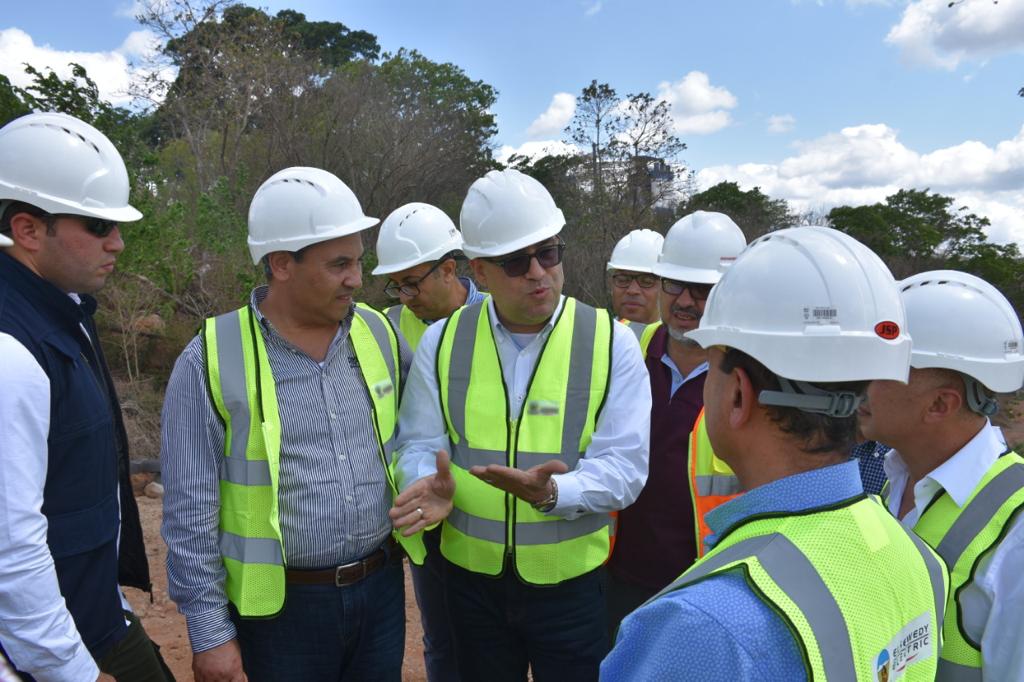
Egyptian Housing Minister Assem al-Gazzar on Saturday inspected construction work of the Julius Nyerere hydroelectric dam project in Tanzania, which is being worked on by an Egyptian consortium of Arab Contractors and Elsewedy Electric at a cost of US$2.9 billion.
Gazzar said that Egyptian President Abdel Fattah al-Sisi is periodically following the project’s progress, and explained that his visit is to check up on the project’s implementation.
This project reflects the distinguished relations between both nations, he said, and comes to help Tanzanian people as it will provide further electrical power and higher development rates.
The minister added that since its inception in December 2018 the project has been carried out smoothly, with continuous cooperation between the Egyptian and Tanzanian sides to resolve all obstacles.
Gazzar held an expanded meeting reviewing the volume of work conducted at the dam project thus far. He was accompanied by a Housing Ministry delegation and the Egyptian coalition implementing the project, where they inspect work done at the main dam and the river diversion tunnel, which has been fully finalized.
It is anticipated that this month will see the river’s course diverted.
The power station is set to located across the Rufiji River in the Stiegler’s Gorge, at the Selous Game Reserve in the Morogoro region 220 kilometers southwest of Dar es Salaam, the commercial capital and largest city of Tanzania.
The project’s goal is generating electricity of 2,115 MW to provide Tanzania’s energy needs, as well as controlling water levels during flood periods and satisfy the state’s water needs.
The 134-meter dam will have a storage capacity of 34 million cubic meters of water. The reservoir will be 100-kilometers long and 1,350 square kilometers in area, while the earth embankment will be 3.7 million cubic meters.
The powerhouse will be above-ground and consist of nine vertical Francis turbines with capacity ranging from 200 MW to 300 MW each, and power generators with a capacity of 1,200 MW each. Power transformers of 235-353 MVA each with a combined capacity of 2,470 MVA will be installed. The plant will also include a 400 kV switch yard.
Additional infrastructure will include electric switch gears, a protection system and fire detection system, along with auxiliary power supply, DC systems, cooling and sewage systems.
The construction of 10-kilometer internal roads, 15-kilometer long residential roads, 350 permanent houses and 3,000 secondary houses are also part of the project.




